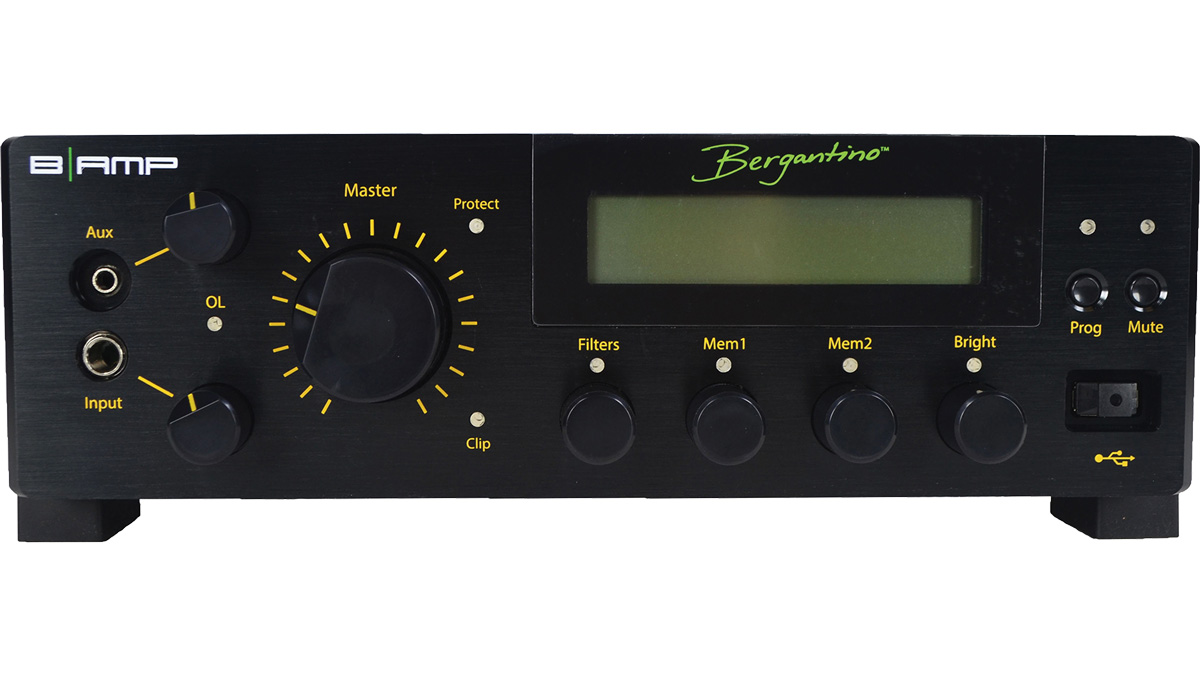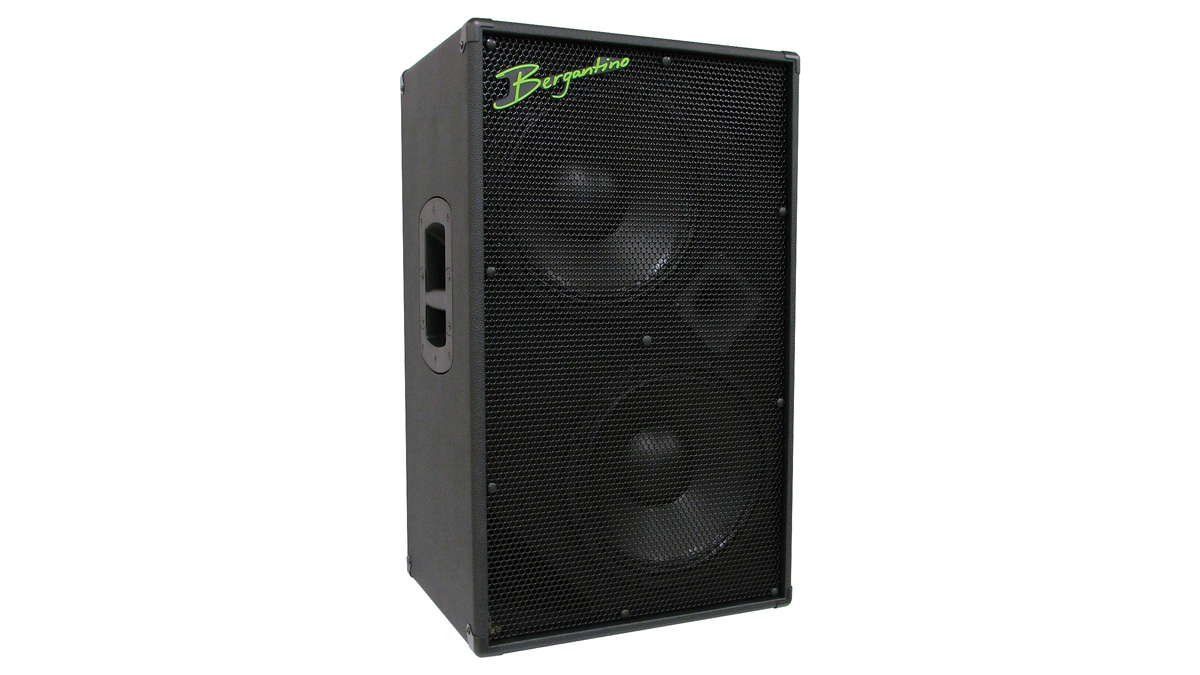MusicRadar Verdict
The amp was worth the wait and, matched with this cab, provides a solid, flexible bass system with plenty of options.
Pros
- +
Portable, full frequency set-up that delivers everything you could want from an amp and cab combination.
Cons
- -
Quality costs. Take care of the LCD display!
MusicRadar's got your back
Bergantino cabinets have long been the preserve of players who know exactly how they want their basses to sound, as well as having the advantage of being lightweight, and although they’re not cheap, they signify quality, power and finesse.
The missing link for some time has been an amp from the same stable to bring out the very best that these cabinets have to offer.
Well, the wait is over and the BIAmp - pronounced ‘bee-amp’ - is here. Some of you will no doubt look at it and instantly think ‘techy’, ‘not enough controls’, ‘too many options’ - but wait, there is method in the madness. This amp is a constantly upgradable hub that can continuously develop over time. Let’s take a closer look at how it works.
Build
Bergantino products never skimp on quality and the 2x12 Neo-equipped cabinet continues that trend, utilising a combination of Italian poplar and Baltic birch in its construction. Having used a 2x12 cabinet format for years, we can verify that as a one-cab solution, it works very well: this cab will certainly fill the frequencies required with its 700W delivery, the adjustable tweeter being the icing on the cake.
Covered in black tolex with side-recessed carry handles and protective corners, the cab’s portability is good, although the vertical dimensions require some care when carrying it and walking, so as not to put undue stress on your back.
The amp is a perfect size and shape, almost like a hi-fi separate in terms of its design: it fits in nicely among the similarly-sized Class D amps already out there. The front end is intuitive and pleasantly simple, with basic Gain and Master Volume controls followed by a four-band graphic EQ: the display is also clear and concise.
Two memory banks allow storage of EQ presets, while the USB connection provides the pathway for constant upgrading, delivery of factory presets, FX patches and tonal tweaks including custom cabinet performance and speaker profiles. A chromatic tuner is easily accessible, while distortion, overdrive and fuzz effects are already included in the system. The physical feel of the amp is one of quality, and although you might look at the unit and wonder if it’s up to the rigours of gigging, the front end has been designed in a simple, uncluttered fashion.
Sounds
Straightaway, the power available and tonal clarity are clearly discernible. Obtaining a quality tone is extremely easy, while the cabinet reinforces your playing signal with power and authority. The low frequencies are smoothly conveyed, while the midrange is reinforced by the 12” speakers, which offer a warmer response compared to 10” drivers. The top end response is particularly pleasing: adjusting the tweeter offers several choices, from clear definition with tonal body to glassy percussive presence. At no point does the treble response sound weak, brittle or harsh.

The display shows your EQ settings clearly, so adjustments can be easily made should you wish to change the centre frequency of each EQ control. By holding down the Filters/Bass control, another menu appears, allowing you to tailor your parametric EQ.
The storage of memory settings is a real plus point, as it means you can store two presets, either for switching sound during a gig or for setting individual profiles for specific instruments. A feedback filter has been included, which will no doubt please double bass players who need to switch between upright and electric.
The amp and cabinet combined form a highly impressive system that is substantial, tonally flexible, lightweight enough for easy portability, and loaded with enough power at 800W to cope with any musical environment. Players of all styles will find something to enjoy, the cabinet having plenty of air-pushing capability should you need it.
Technophobes may well dismiss the BIAmp, but considering how much time and effort has been expended to bring this product to market, you owe it to yourself to check it out. Granted, neither item is cheap, but you’re paying for quality components: the benefits can be heard for themselves.
As a player who likes to set a sound from the amp and then use the instrument’s onboard EQ to tailor my gig sound, we were fully engrossed in the workings of the BIAmp and what it had to offer. A great amp, and rig, that was worth waiting for.
"As digital pianos occupy a lot of horizontal space, contrasting this by maximising the vertical space will help to balance the area stylistically": 8 tips and tricks from a design expert to style a digital piano
“If you’re writing with likes, engagement and streams firmly in your mind, you’re setting yourself up to fail”: Why you should never view music-making as a job
Prince’s Purple Rain follow-up came out of leftfield, but did it derail his career?










